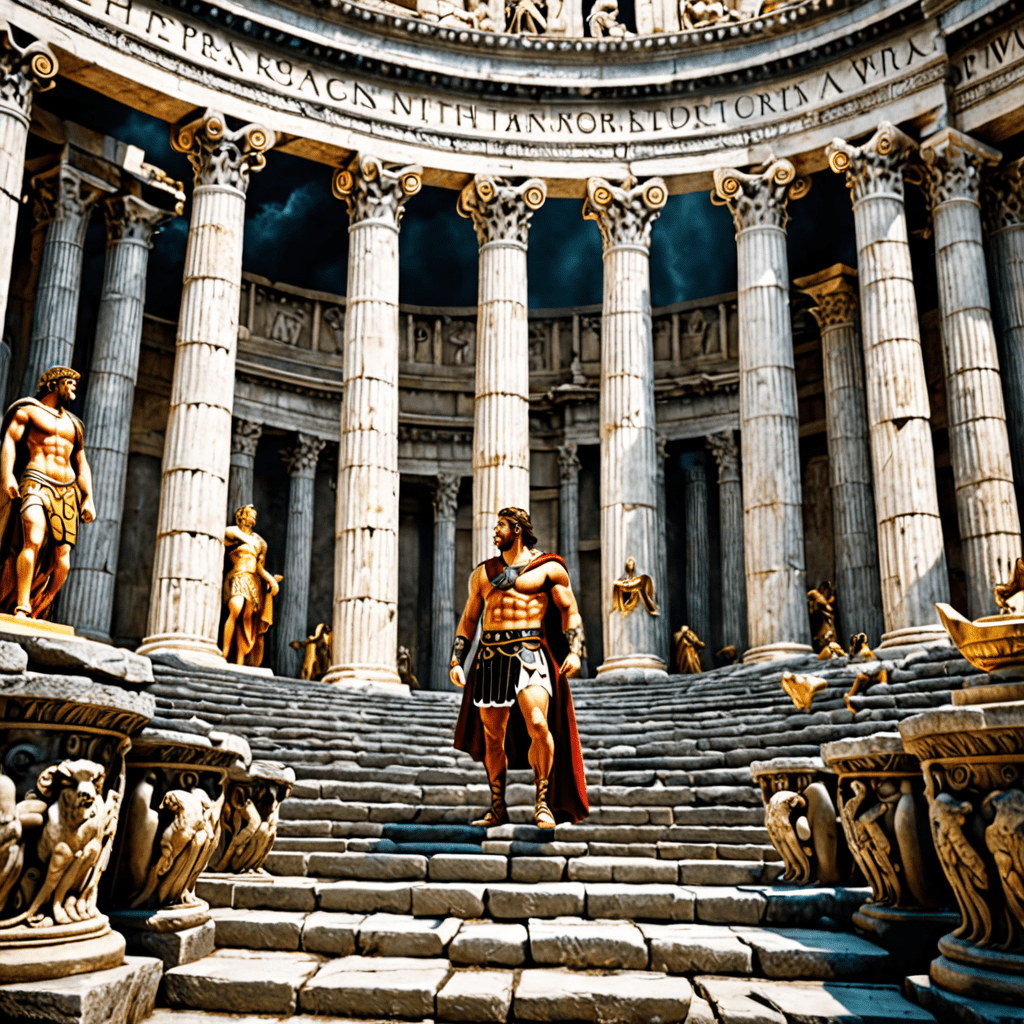Slavic Mythology: An Overview of Beliefs and Symbolism
Slavic mythology, an ancient and multifaceted belief system, is an amalgamation of cultural practices, folklore, and spiritual traditions shared by Slavic-speaking peoples. It emerged as a rich tapestry of beliefs and narratives, shaping the worldview and societal norms of these communities. At its core, Slavic mythology emphasizes the interconnectedness of nature, the cosmos, and humanity, with deities and spirits playing significant roles in shaping the world.
The Role of Metalworking in Slavic Society
Metalworking assumes great significance within Slavic mythology, deeply ingrained in cultural values and practical applications. The ability to forge and manipulate metals represented technological prowess, craftsmanship, and the manifestation of divine powers. Metalworking played a crucial role in everyday life, enabling the creation of essential tools, weapons, armor, and decorative objects. This mastery not only shaped material culture but also permeated the realm of spirituality and symbolism.
The Symbolism of Iron and Steel
Iron and steel, renowned for their strength and durability, held profound symbolic significance in Slavic mythology. Iron symbolized resilience, power, and protection, often associated with the god Perun, the thunderer and protector of warriors. Steel, a refined form of iron, represented purity, steadfastness, and the transformative power of fire. These metals embodied the qualities of Slavic warriors and were imbued with the spirit of these mythical figures.
The Importance of the Forge and the Anvil
The forge and the anvil occupy central positions in Slavic metalworking mythology. The forge, where fire transforms raw ore into molten metal, represents the primordial creative force, the transformative power of the divine. The anvil, an unyielding surface against which metal is shaped, symbolizes strength, stability, and the indomitable spirit. Together, the forge and the anvil embody the harmonious interplay of fire and earth, essential for the creation of powerful objects.
Slavic Gods and Metalworking: Svarog, Perun, and Veles
The Slavic pantheon includes several deities associated with metalworking. Svarog, the father of the gods, is considered the patron of blacksmiths and metalworkers. Perun, the god of thunder and war, is often depicted wielding a mighty iron hammer. Veles, the god of the underworld and cattle, is connected to the transformative power of fire and is believed to have taught humans the art of metalworking. These deities represent the divine aspects of metalworking, symbolizing the creative, protective, and transformative forces associated with this craft.
6. Legendary Smiths in Slavic Mythology: Kovals of Kiev
Slavic mythology boasts tales of legendary smiths, individuals renowned for their exceptional skills and divine connections. Among them, the Kovals of Kiev stand out as mythical figures whose prowess was said to surpass that of mere mortals. Legends narrate their ability to forge magical weapons and armor that bestowed extraordinary abilities upon those who wielded them. The Kovals were believed to possess knowledge of secret techniques, passed down through generations, enabling them to create objects of unmatched quality and resilience.
7. Metalworking as a Ritual Performance
In Slavic societies, metalworking extended beyond its practical applications to become an integral part of ritual practices. The forging process itself was imbued with spiritual significance, viewed as a sacred act that connected humans with the divine. Smiths were often regarded as intermediaries between the realms of mortals and gods, their craft a manifestation of cosmic forces. Rituals involving the creation of metal objects, such as weapons, tools, and jewelry, were believed to imbue them with special powers, protecting wearers from evil or granting them divine favor.
8. The Aesthetics of Slavic Metalwork: Decorative Motifs and Patterns
Slavic metalworkers demonstrated exceptional artistry, employing various decorative techniques to adorn their creations. Intricate patterns, geometric designs, and symbolic motifs adorned metal objects, transforming them into works of art. These motifs often held deep cultural significance, representing ancient beliefs and mythological narratives. Spirals, for example, symbolized eternity and the interconnectedness of life, while thunderbolts evoked the protective power of Perun. The aesthetic qualities of Slavic metalwork not only enhanced their functionality but also conveyed cultural values and beliefs.
9. The Legacy of Slavic Metalworking: From Pagan Origins to Christian Art
The enduring legacy of Slavic metalworking transcends its pagan origins, influencing the development of subsequent artistic traditions. With the spread of Christianity, metalworking techniques and motifs were incorporated into the production of religious objects, such as crosses, chalices, and icons. Slavic artisans adapted their skills to create intricate and awe-inspiring works that adorned churches and monasteries. The融合of pagan and Christian elements resulted in a unique and vibrant artistic expression that continues to inspire and captivate audiences today.
10. Conclusion: The Enduring Significance of the Slavic Art of Metalworking
The art of metalworking holds a central position in Slavic mythology and culture, deeply intertwined with beliefs, rituals, and aesthetics. The ability to transform raw ore into objects of power, beauty, and spiritual significance elevated Slavic smiths to the status of revered artisans and intermediaries with the divine. From the legendary Kovals of Kiev to the exquisite metalwork adorning Christian artifacts, the legacy of Slavic metalworking endures, a testament to the enduring creativity and cultural heritage of Slavic-speaking peoples.
FAQs:
1. What was the significance of iron and steel in Slavic mythology?
Iron and steel symbolized resilience, strength, and protection, associated with the god Perun. Steel represented purity and transformation, embodying the divine powers invoked during the metalworking process.
2. Which Slavic gods were connected to metalworking?
Svarog, the father of the gods, was the patron of blacksmiths, while Perun, the god of thunder, was often depicted as a mighty smith. Veles, the underworld god, was associated with the transformative power of fire and is said to have taught humans the art of metalworking.
3. Were there famous smiths in Slavic legends?
Yes, the legendary Kovals of Kiev were renowned for their exceptional skills, crafting magical weapons and armor imbued with extraordinary powers. Their abilities surpassed mortal capabilities, and they were revered as divine artisans.
4. How did metalworking influence other art forms?
With the spread of Christianity, Slavic metalworking techniques and motifs were incorporated into the production of religious artifacts, such as crosses and chalices. This融合resulted in a distinct artistic expression, combining pagan influences with Christian symbolism.



